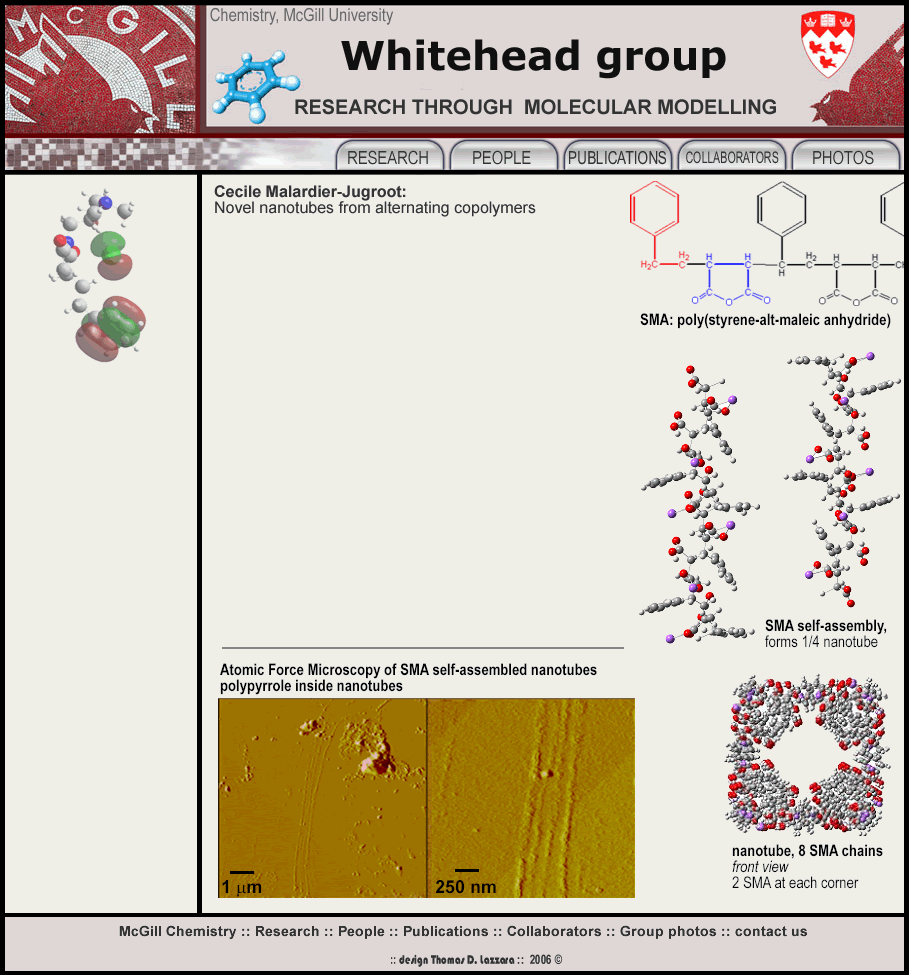The most stable conformation obtained for the self-association at pH7 is a tubular structure: 8 SMA polymer chains make one twist of a helix. The tubes can grow in lenght by continued regular stacking of benzene rings. The nanotubes have inner and outer diameters of about 2.8 and 4.1nm respectively. The hydrophobic groups are mainly located inside the tube and the hydrophilic groups on the exterior surface of the tube. Self-assembly is a very efficient method to obtain well defined and often defect-free nano-architectures. The association and variety of shapes and properties of block copolymers have been extensively studied. Applications range from foam stabilizers to drug delivery mediums. We have studied the associaion of SMA, both umerically and experimentally. The characterization of the association was performed using theoretical methods (ab initio and semi-empirical). The association of SMA octamers into tubular structures at pH 7 was confirmed experimentally by freeze fracture TEM and AFM and the nanotubes observed were several micrometers long. They were also characterized by neutron scattering and the conformation at the air-water interface by neutron reflectivity.
Whitehead group
Contacts
address:
Prof. M.A. Whitehead
Department of Chemistry
McGill University
Otto Maass Chemistry Building,
801 Sherbrooke St. West,
Room 352,
Montreal, Quebec,
H3A 2K6, Canada.
Phone:
office: (514) 398-6239
lab: (514) 398-6905
fax: (514) 398-3797
email:
tony.whitehead@mcgill.ca
